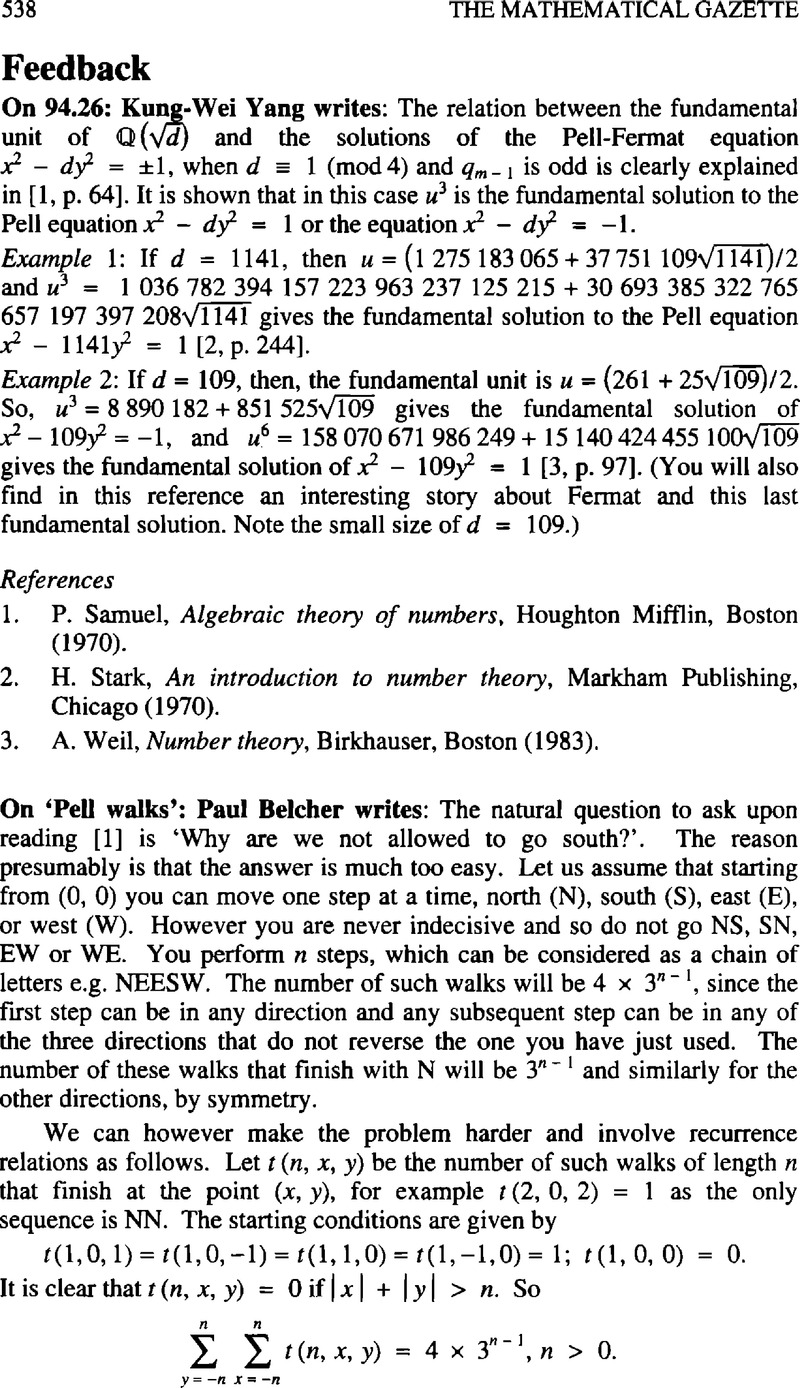No CrossRef data available.
Article contents
Feedback
Published online by Cambridge University Press: 23 January 2015
Abstract
An abstract is not available for this content so a preview has been provided. Please use the Get access link above for information on how to access this content.

Information
- Type
- Other
- Information
- Copyright
- Copyright © The Mathematical Association 2013
References
References
1.
Leversha, G., A direct derivation of the Catalan formula, Math. Gaz.
97 (March 2013) pp. 53–60.Google Scholar
1.
Shiu, P., The gaps between sums of two squares, Math. Gaz.
97, (July 2013), pp. 256–262.Google Scholar
2.
Goldston, D. A., Pintz, J. and Yildirim, C. Y., Primes in tuples. I, Ann. of Math.
170 (2009), pp. 819–862.Google Scholar
3.
Erdos, P., The difference between consecutive primes, Duke Math. J.
6 (1940) pp. 438–441.Google Scholar
4.
Bombieri, E. and Davenport, H., Small differences between prime numbers, Proc. Roy. Soc. Ser. A
293 (1966) pp. 1–18.Google Scholar
5.
Huxley, M., Small differences between consecutive primes II, Mathematika
24 (1977) pp. 142–152.Google Scholar
6.
Maier, H., Small differences between prime numbers, Michigan Math. J.
35 (1988) pp. 323–344.Google Scholar
7.
Hardy, G. H. and Littlewood, J. E., Some problems of Patitio Numerorum (III): On the expression of a number as a sum of primes, Acta Math.
44 (1922) pp. 1–70.Google Scholar

